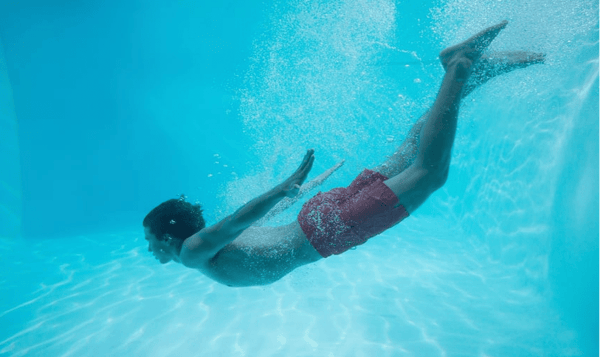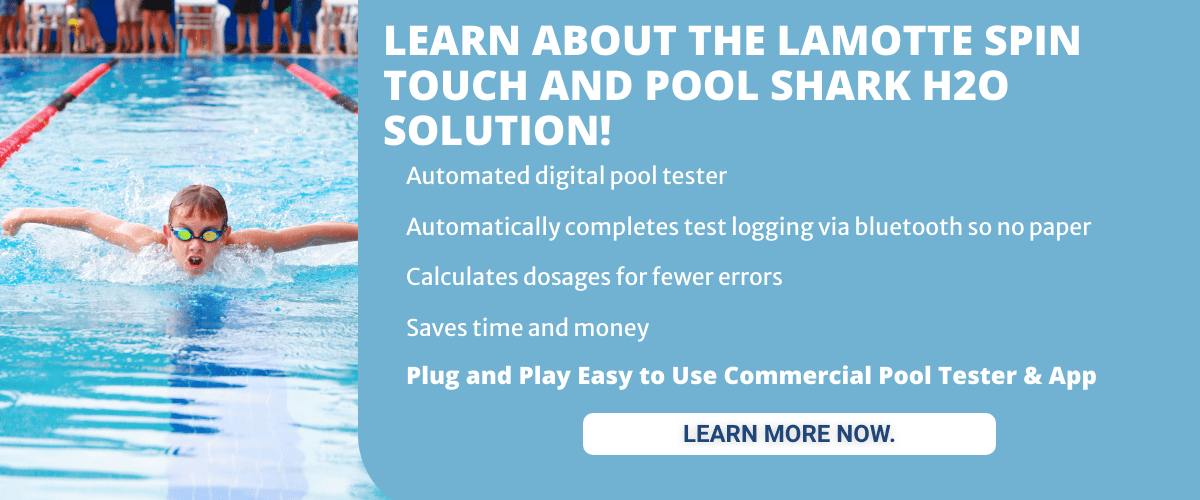We all know how important water chemistry is in our bodies of water. It helps protect the pool’s surface, plumbing, and equipment. It makes the pool look beautiful, clear, and inviting. The most important part is it keeps our bathers safe. Oh! Let us not forget it keeps our bosses happy as well.

Managing pH and Alkalinity in Pools - Test, Test, Test
We as pool operators know to keep up with local requirements and to keep the swimming pool,or pools, safe. Some regions require only once-a-day testing, while others require up to a water test every hour! This can be tough, especially if the swimming pool isn’t your only responsibility. There are things to make this process more efficient, accurate, and time-saving. The Pool Shark H2O App is one of these ways. It uses the Langelier Saturation Index to give you proper dosing instructions on how to adjust your water chemistry properly. The results are sent to any device you have the app installed on. So, you can check on your staff to make sure they are testing, and also the water test results, without even having to be on-site!
You can get further time-saving and accuracy by pairing your Pool Shark H2O App with the ProMinent pool monitoring system. Automatic pool controllers are an easy way to have a healthier pool. They are even required in some states. Pool monitoring systems check the water and add a small dose of chlorine or acid to help keep your sanitizer and pH stable.
Another piece of technology that can be paired with your Pool Shark H2O App is the LaMotte Spin lab. How the spin lab works is very simple. You take a syringe with a very small sample of water and fill one of the spin discs. The disc is then inserted into the spin lab. In just 60 seconds, the results are sent to your Pool Shark H2O app. Then you just follow the dosing instructions. Not ready to jump in on the spin lab? No problem! You can manually test and input the results into your Pool Shark H20 App and receive the same dosing instructions. They won’t be as accurate as a calibrated spin lab. Even the best pool operator cannot always test the water perfectly.
Managing pH and Alkalinity in Pools -
High pH and Alkalinity in Pools
We have all struggled with high pH and alkalinity at some point in our careers. Especially if we have a salt pool because the chlorine produced is very basic and raises alkalinity and pH. Our normal go-to is dry acid (sodium bisulphate) or muriatic acid. Did you know that the EPA has approved borates to adjust alkalinity?
Managing pH and Alkalinity in Pools - Borates
Even though borates seem like a new and cutting-edge product, they have actually been used for decades. Borates and boric acid are surprisingly used in many household products. Laundry detergent and even insecticides are a couple of examples. They can also be used in swimming pools as a buffering agent. Keep in mind, this changes the LSI so adjust accordingly. The impact is small, especially when compared to fields like cyanuric acid.
According to the experts at Orenda, it is agreed that the maximum borate level in a swimming pool is 50 ppm. (Parts per million). Borates are most effective when they are between 30-50 ppm. Like cyanuric acid, borates stay in the water for a long time. Since they don’t evaporate, they tend to stay at the same level throughout the year. You lose it like you lose other chemicals by backwashing, splashing out etc. Since no other products contain borates, you should be able to stay around the same level all year. Remember, you will need a test kit to measure the level of borates in your water!
What Do Borates Do to My Pool Water Chemistry?
Basically, they do four main things.
- They buffer pH from increasing
- They act as an algaestat and help prevent algae
- They can help lower the demand for chlorine
- They can help improve water clarity
Managing pH and Alkalinity in Pools - Buffering pH
The most dominant buffering system is the carbonate alkalinity system used in swimming pools. Borates buffer against pH, usually lowering it. What does “buffering” even mean? It means a resistance in the change in your pool’s pH. It does this by taking away a hydrogen ion. Boric acid is a “Lewis Acid” that does not dissociate in water. We then get a PKa value. This value is where we can resist the change in pH. The closer we can get our pH to the PKa value, the more resistance it faces. (www.orenda.com)
Managing pH and Alkalinity in Pools - Contribution to the LSI and the pH Ceiling
Because borates/boric acid buffers pH, it does contribute slightly to the LSI as we chatted about above. Because borates make a contribution to the total alkalinity, the carbonate alkalinity is lower. This means a lower pH ceiling when you are using a borate product.
Managing pH and Alkalinity in Pools - Borates as an Algaecide?
I learned that borates can help reduce algae by disrupting the cell wall development, metabolism and the cell’s division. So in a nutshell, borates are more for preventing algae than killing it.
Managing pH and Alkalinity in Pools - Chlorine Power!
Because our pH and alkalinity are more likely to be in range, our chlorine becomes more effective, thus lowering the demand. I am all about saving chemicals. Saving chemicals equals saving money. Sign me up!
Managing pH and Alkalinity in Pools - It is Becoming Clearer
Not this article. This article talks to chemistry-e for me. LOL. We all know water clarity relies on proper filtration, circulation, and balanced water chemistry. That sparkle in your pool? It is actually how light penetrates and reflects in the water. Since borates reduce surface tension, you are more apt to see an increase in water clarity. Man, are these borates multi-tasking or what?
Managing pH and Alkalinity in Pools - Safety
Always make sure to read the product’s label, especially when introducing a new product. Wear the proper PPE (personal protective equipment) and never mix chemicals. Only use borates that are labeled for use in swimming pools. Follow proper dosing and make sure you have a test kit that can test for borate levels. Hey, it is the law! You will hear many opinions on the use of borates. Ask people what their opinion and experience is considering this is deemed a “newer method”. See you poolside!
More Commercial Pool Chemistry Resources
Free, vs Combined vs Total Chlorine - A Guide for Commercial or Public Pool Operators
Chlorine Shock vs Non-Chlorine Swimming Pool Shock
Why Being Able to Calculate the Volume of a Commercial or Public Swimming Pool is Important
Cyanuric Acid Levels in Swimming Pools
Ideal Alkalinity in Commercial Pools
Commercial Pool Chlorine Management
Cyanuric Acid in Your Pool Too High? How to Remove Cyanuric Acid (Lower Pool Stabilizer)
Lowering Alkalinity in Swimming Pools
Reasons Your Public or Commercial Pool Water Could Be Cloudy
Muriatic Acid in Swimming Pools



